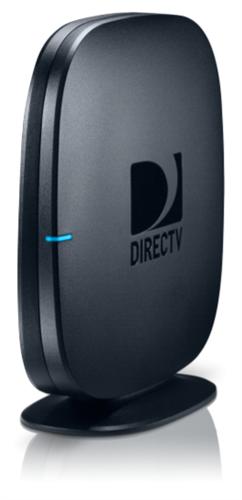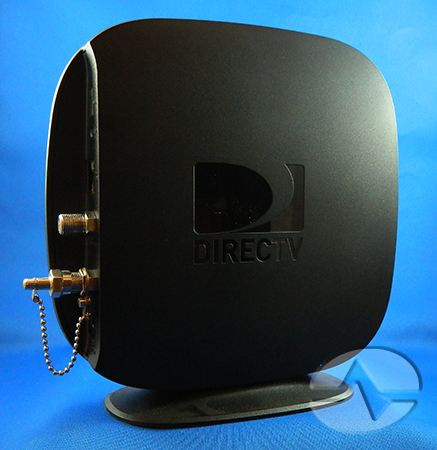A couple of weeks ago, the DIRECTV support world erupted into chaos. OK, that’s a bit extreme. Let me say it a different way. I was perusing the many DIRECTV peer support forums and I found that there was one person asking one question, and that question raised a lot of other questions. One of them was particularly interesting to me, and it became the subject of this article.
The Wireless Video Bridge

This is DIRECTV’s Wireless Video Bridge. It’s been around a while, but you can probably tell that from the old-school DIRECTV logo. You can also read the review of it that I did back when it was new. It launched to consumers almost ten years ago now, and it’s been quietly doing the hard work since.
The purpose of this Wireless Video Bridge is to enable DIRECTV Genie hardware to use the wireless clients now available. Those have seen an evolution, too, with the latest Gemini for Satellite being able to connect wirelessly to a DIRECTV Genie DVR and also provide access to thousands of streaming apps.
The wireless install is often the default for new customers. Installers like it because it’s faster than a wired install, and customer like it because there are fewer holes drilled in the walls. As long as the installer determines that the signal will be strong enough, the customer will get wireless clients.
However, most new customers get the Genie 2, which has been the standard install since 2017. It has this hardware built into it, and doesn’t need a separate piece of hardware. So, this Wireless Video Bridge doesn’t see a lot of action anymore. It’s only needed if the customer has an HR54 DVR instead of a Genie 2.
What’s in a Wireless Video Bridge?
This product was developed at a time when DIRECTV was using a lot of off-the-shelf hardware to make things work. That’s not a bad thing and it meant that development time was a lot faster. What you have here is really a combination of three things, all stuffed into the same case. There’s a typical wireless access point from Cisco (who owned Linksys at the time), a coax networking adapter similar to this one, and a two-way splitter similar to this one. It’s all put together in a case not too different from this one. There’s a bit of custom firmware to make it all work, and that’s about it.
And now, to the controversy
As I said, this device has an internal two-way splitter. This was originally meant to help keep installations simple by allowing customers to pass a DVR or receiver through to that port. However it never worked reliably in customer installs for whatever reasons, and DIRECTV’s own installers will not install it that way. There’s a terminator cap on the second coax connector on the back, as you can see from this picture I took in 2013.

Personally, I stopped recommending using the passthrough port years ago. As with all splitters, there’s a 3dB loss inherent in using it, and that may be enough to cause problems. You’re far better off using a larger splitter and making sure that you have enough ports to avoid using the second port on the video bridge.
But the real question that came up is, will this connector pass power. This wasn’t a concern when it was designed. However, since the HR54 DVR will power the dish without a separate power inserter, it’s become a good question. Specifically:
Can you connect an HR54 directly to the passthrough port on a Wireless Video Bridge, and connect the dish to the other port, simplifying wiring?
In order to find out, I took my old Wireless Video Bridge out of mothballs. To be honest there were a lot of mothballs, it’s been sitting there for a decade. I connected up some sacrificial coax cable and started passing power through it using a vintage power inserter from the same era.
Here’s what I found: While the ports are not labeled with red centers, the device did pass power through the coax ports. I was able to get all 29 volts to pass through. However, the connection wasn’t consistent. I saw voltage drops of 5-6 volts happen pretty routinely. That’s enough to cause problems with a dish.
I then set out to see if the connectors were just bad. I ran signal from my satellite dish instead of voltage and tested the signal using an AIM meter. There were no problems with signal. This made me confident that the connection was strong.
Conclusion: Don’t use a Wireless Video Bridge between an HR54 and a dish.
The Wireless Video Bridge was not designed to pass power. It just wasn’t something that we did back then. It does seem to work, probably because adding a DC block would have increased the cost of the item. But it doesn’t work very well.
Instead, connect the HR54 to the red port on a traditional 2-way splitter and connect the video bridge to the other port. This should be much more reliable.
One last note
I want to point out that I tested 10-year-old hardware that was provided as part of a pilot run. So it may have aged badly. If I had done this test in 2013 it might have worked better. However, a lot of the Wireless Video Bridges out there, even ones that have never been sold, are of similar age. It’s not a very common item and hasn’t actually been manufactured in some time. That’s why I feel confident saying again, don’t use the passthrough port on a Wireless Video Bridge to try to pass power.
Need help and support with your DIY satellite system?
If you’re a DIRECTV DIYer, you’ll find all the same parts and accessories used by installers when you shop at SolidSignal.com. If you need help choosing the right parts or even figuring out what to do next, call the experts! We’re here for you at 888-233-7563. Or, if you prefer, fill out the form below and we’ll get right back to you.




